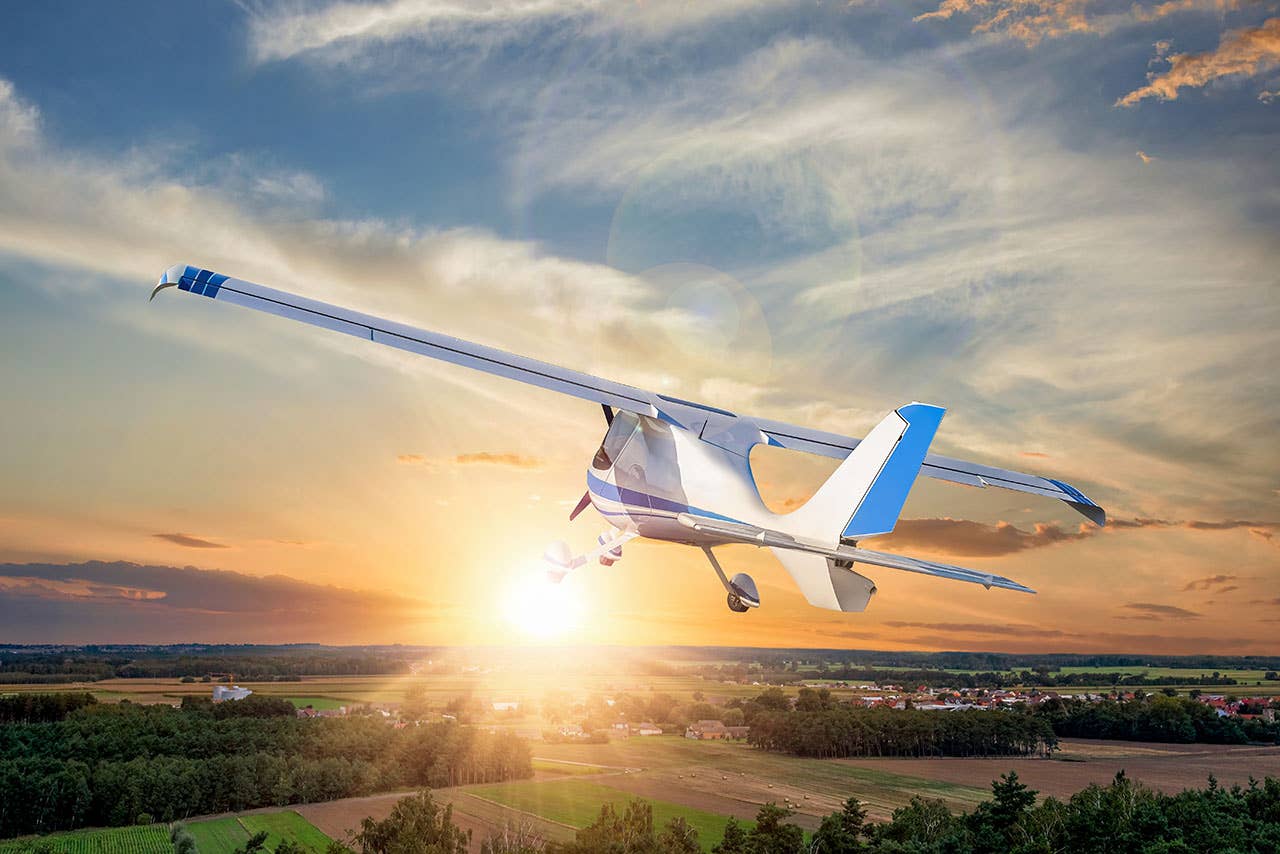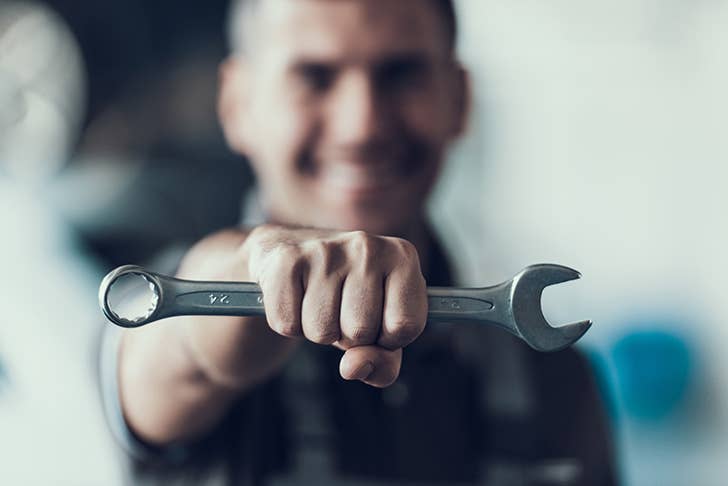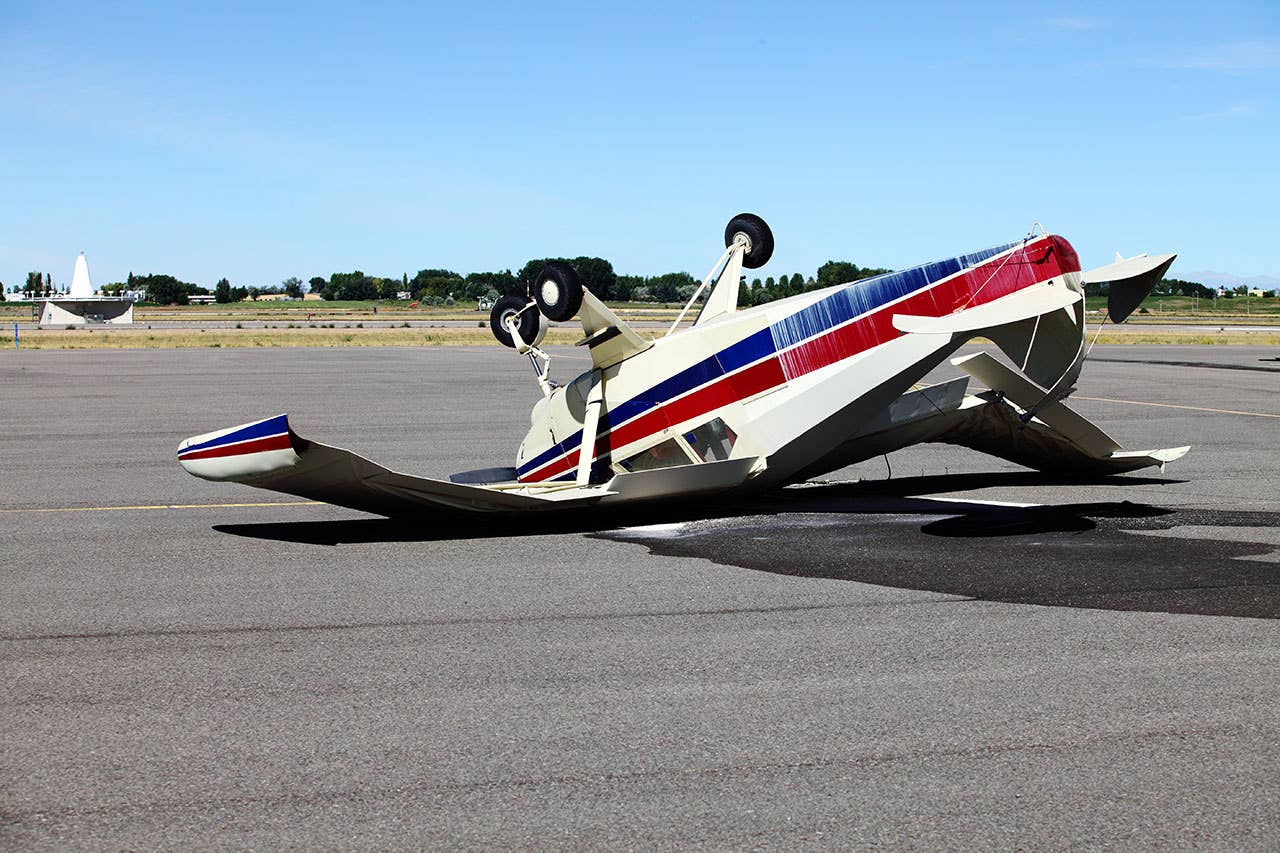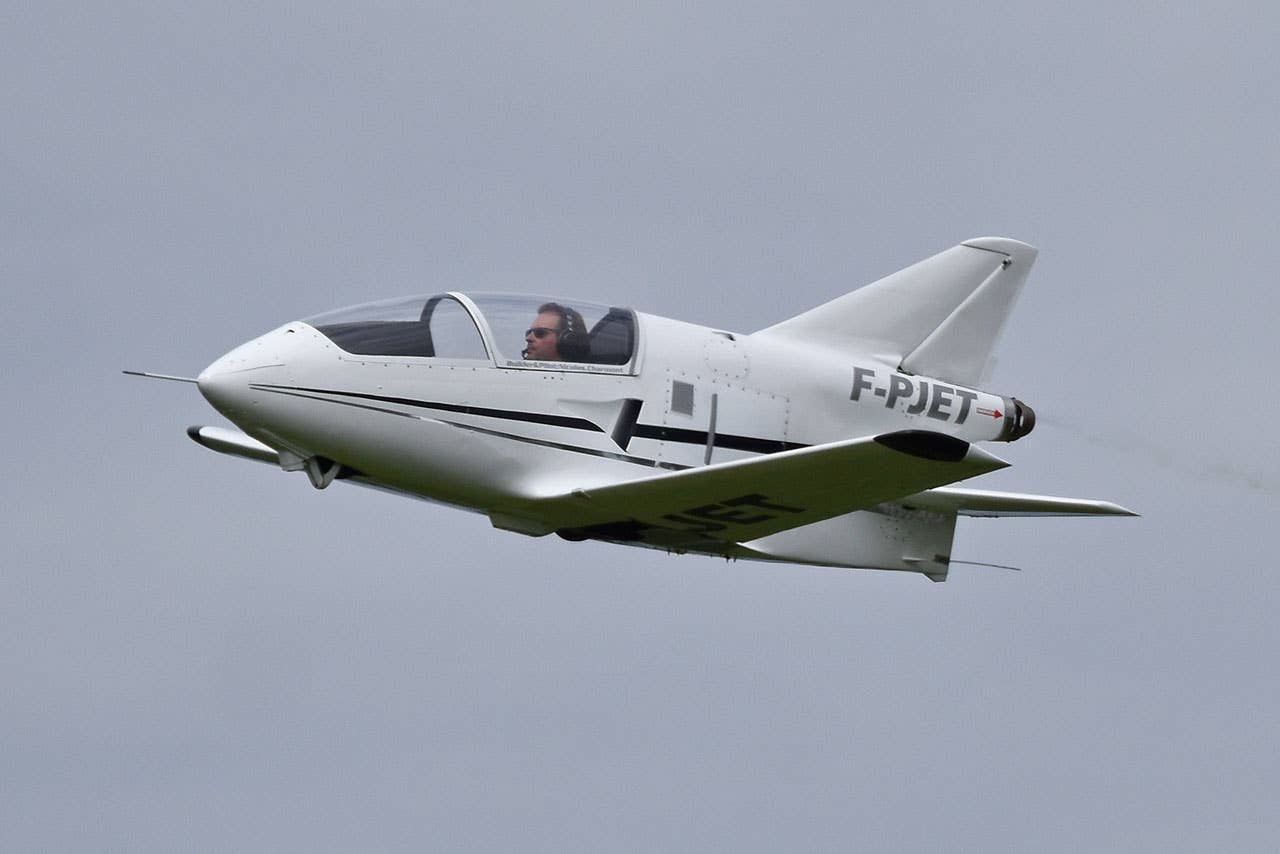Adding Aux Fuel Tanks To Your Airplane
We’ve all been in that place where more fuel would have meant a faster and better trip. With many planes, that dreamed-of additional capacity is possible.
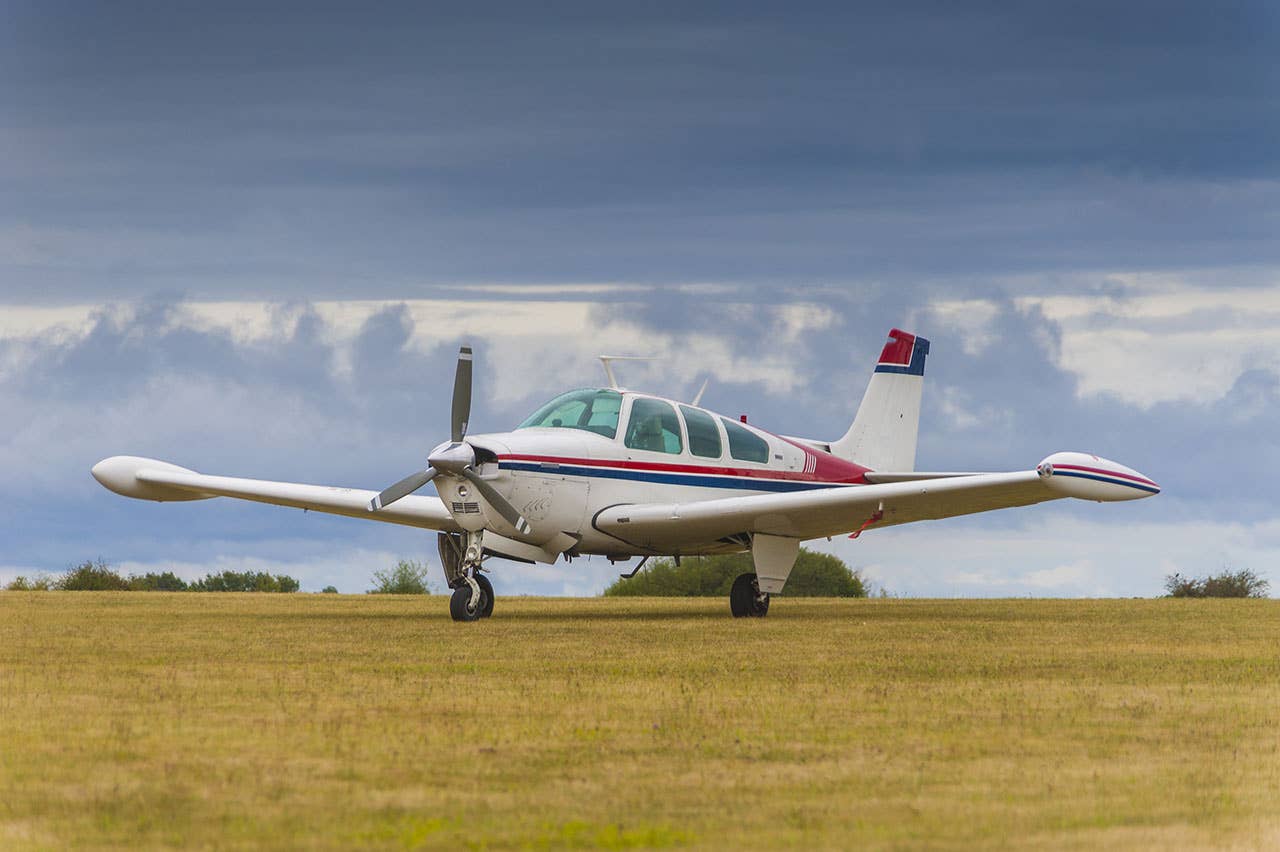
Range on planes like this Bonanza can go from good to great with the addition of retrofit aux fuel tanks. Photo via shutterstock.
Who doesn't want a little more range from their favorite airplane? Or, rather specifically, more endurance. After all, airplanes deliver their horsepower from burning fuel at a more or less fixed rate, consumed in gallons per hour. The number of miles covered, on the other hand, is utterly dependant on the wind's velocity; your actual mileage may vary. But we have all probably had the thought: "If I just had another hour of fuel, I could make this leg nonstop."
Installing an auxiliary fuel system to eliminate the temptation to land "on fumes" or, worse yet, to exhaust one's fuel supply short of the destination, is not an inexpensive or easy solution. That said, there are proven, well-engineered aux fuel systems to be had for the most popular planes, and you'll find that some airplanes on the market have already had them installed, should you be shopping for a new ride. We'll discuss what's available and how they work.
To Tank Or Not To Tank
Is installing auxiliary tanks a good idea? It depends on your needs and plans for the airplane. How often do you make trips that stretch your available fuel supply, requiring an extra stop to complete the mission? If this occurs only a couple of times per year, you're probably better off leaving the plane as it is. Frequent cross-country jaunts, on the other hand, can justify adding tankage.
Will add-on fuel tanks increase the airplane's resale value? In the case of some short-legged designs that came from the factory with insufficient fuel supply, definitely. But if the stock fuel capacity is adequate for the great majority of potential buyers, not so much. In general, I always assume that spending money on improvements to your airplane gains only half the expense in immediate resale value. The rest should be recovered in the satisfaction of flying it for a few years.
No solution is free of consequences. Hauling an extra 40 gallons of gas around means your payload is cut by 240 pounds, unless the tank installation includes an extra gross weight allowance, which, in some cases, it does. And the system itself adds to the aircraft's empty weight. More weight means less performance, requiring a recalculation of the takeoff distance and time-to-climb charts. I knew of a tricked-out Cessna 340 that could legally carry only two people if all of its add-on tanks were topped off. In addition, the usable cruise altitudes, and the single-engine ceiling, were reduced as it struggled to climb with the extra load.
However, it's very comforting to know you've got plenty of gas to go the distance. IFR flying is predicated on being able to dodge some weather, shoot an approach to unknown conditions that might not work out, and then divert to an alternate to land with fuel enough to reach yet another airport if that one didn't work out. That often means you'll need to take off with six hours of fuel on board just to make a three-hour trip. For an airplane to be considered "fully IFR capable," it needs to have more than a panel full of radios; it needs to have legs.
Even if you're operating carefully VFR, do you really want to sit in an airplane for over five hours? Most passengers need a break in no more than three hours, so stopping to refuel isn't necessarily a burden. Spending the money to install auxiliary tanks that aren't used that often may be a needless extravagance.
Born Short
Some airplanes, however, were short-changed at the factory, particularly if they've been modified with larger, thirstier engines. A modified Cessna 152 or Grumman AA-1 with its horsepower boosted from 108-110 to 150 is a two-hour cruiser with standard tanks. A lot of Beech Bonanzas from the 1940s and ’50s have been modified with larger engines but were left with only 39 gallons of standard fuel supply. The early 250-hp Piper Comanches came with the 60-gallon tanks of the 180-hp version, begging for a tip-tank modification.
Beech's first turbocharged Bonanza A36, the A36TC, had the 74-gallon tanks of its normally aspirated sibling, hardly enough to keep it aloft for four hours. The follow-on B36TC hoisted 102 gallons, so it's obvious why so many A36TC's have had tip tanks added to feed the TSIO-520 engine. Turbine-converted airplanes, like the Silver Eagle P210, Soloy 206 and turboprop Bonanzas, will obviously need extra fuel for the thirstier turboprop engine.
Given the need, there are options in add-on fuel systems. Wingtip fuel tanks are a commonly seen modification, sometimes gaining a takeoff weight increase to offset some of the payload limitations. Putting extra fuel on the tips is a better engineering option than adding weight in the fuselage, allowing the wing's span to share the load instead of increasing bending movement at the root. The drag of the tip tank may be offset somewhat by its end-plate effect by controlling tip vortexes. Adding a rear fuselage tank, by comparison, will cause the C.G. to move aft, something to be done with caution because it decreases pitch stability.
In homebuilt airplanes, the designer sometimes starts out with a simple header tank located forward of the cabin but, as bigger engines are installed, will be forced to add wing root tanks to replenish the suddenly insufficient header tank. High-wing EAB types can dump the fuel in by gravity, while low-wing homebuilts will need a pump to lift the gas. Designers of twin-engine airplanes may resort to wingtip tanks to supplement fuel in the wings, or there can be nacelle tanks added aft of the engines.
Tanking The Bonanza
The Beech Bonanza, whose incredible production run is closing in on 75 years, is a particularly fertile field for auxiliary fuel tank installations. The original Bonanza 35's 39-gallon wing-tank fuel system was soon outgrown as horsepower increased in either stock form or through modification. A factory-installed STC added a 20-gallon rear fuselage tank, available up to the 1954 E35. Some of these older airplanes have even had wingtip tanks installed for a total of five fuel sources. The F35 of 1955 introduced auxiliary wing bladders, used until the 1960 M35, after which the optional-but-always-ordered long-range tanks simplified fuel management.
You can forget about adding an aft-fuselage tank to an old Bonanza that wasn't built with one, so wingtip fuel is really the only way to go at this point. Even the 74-gallon factory tanks in the more modern Bonanzas aren't always enough, as we mentioned earlier. Two tip tank options exist; General Aviation Modifications (GAMI), Inc., in Ada, Oklahoma, now offers the 20-gallon tip tanks previously made by J.L. Osborne in Victorville, California, and D'Shannon Aviation, Inc., of Buffalo, Minnesota, sells its own wingtip tank system. Both work well, using electric pumps to move the fuel into depleted wing tanks.
The Osborne by GAMI system uses welded aluminum tanks, while the D'Shannon tanks are made of fiberglass, allowing the incorporation of a sight-gauge window to confirm fuel level in addition to the electric gauges. D'Shannon's tanks are canted slightly, reportedly improving roll control. If you're purchasing an existing modified Bonanza, either is worth consideration.
D'Shannon Aviation has had 50 years of experience with its Bonanza tip tanks, which now have a 20-gallon capacity; older installations offered 15 gallons per side. The latest engineering improvements tailor airflow for maximum efficiency, and an aileron-rebalancing kit is included. Reportedly, the tanks help with the Bonanza's dutch-roll characteristics. The kit price is $13,850, with installation time requiring about 50 hours, plus or minus; we were told that $1,450 of the cost of the kit is represented by the new AeroLED lights that come with it.
Osborne by GAMI tanks have a long history as well, dating back to the 1950s. They incorporate LED lighting, feature flush filler caps and quick drains, and are said to improve aerodynamic efficiency and stability. The kit price is currently $12,995 and will cost about $20,000 installed.
Adding tip tanks to a Bonanza can result in an approval to operate at higher gross weights. Both the D'Shannon and GAMI tanks' extra weight allowance varies by model and, in some cases, requires additional weight to be fuel in the tips. However, the matter of increasing takeoff weight may not be entirely tied to a tip tank installation. D'Shannon offers a Genesis STC to extend gross weight, allowing operation in Normal Category certification instead of the Utility Category carried by most Bonanzas. This resets maneuvering speed and other POH parameters.
Navion Fuel Systems
The J.L. Osborne tip tanks, originally sold under the "Brittain" name, were offered for Navions as well as Bonanzas. The Navion's unique factory fuel system had two 20-gallon wing tanks filled by a single port, with an optional aft-fuselage tank holding an extra 20 gallons. Without the rear tank option, the addition of 20 gallons per side with the Osborne tip tanks gave a very desirable increase in range. In addition, a 250-pound gross weight increase was part of the Osborne tanks' approval for the older Navions. A total 108-gallon supply, including tip tanks, was available in the final Navion Rangemaster model.
Piper Comanche Tip Tanks
The PA-24 Comanche is a fine airplane, but for the first three years of its production, it held only 60 gallons of fuel, not quite enough for the 250-hp version, which is the reason an extra 30 gallons became available in auxiliary wing tanks by 1961. On the early Comanches, one frequently sees Osborne tip tank installations holding 15 gallons each, and they are sometimes found even when the optional 90-gallon fuel system is installed. The Twin Comanche is also a favorite target for adding wingtip tanks. According to GAMI, very few of the Osborne systems for Navions or Comanches were sold in recent years. The new owners will support existing installations with parts and tech support for as long as possible.
More Range For Cessnas
While other options have been pursued for adding fuel capacity to Cessnas, most notably Dave Blanton's 17-gallon Javelin baggage compartment tank in C-170s, the most successful kits are those from Flint Aero in El Cajon, California. Flint tips, as they are frequently called, have been around since 1967 and are seen on Cessnas all over the world. They mimic the look of standard Cessna wing profiles instead of adding a bubble on the end of the wing. As with other tip systems, an electric pump moves the fuel to the standard tanks after room is obtained.
Flint Aero's kits result in added wingspan in some cases by locating the tank in an extension of the stock wing, which results in improved climb performance. Many Flint tanks, however, can be internal, preserving the original wingspan by removing the close-out rib and slipping the fiberglass tank inside the wing.
Approval for legacy Cessnas covers the 150/152, strut-braced 170 and 180 series, and some older 210s. These internal tanks add a total of 23 usable gallons at the cost of 34 pounds of additional empty weight. Estimated time required for the installation is 45 to 60 hours. An average cost of the conversion is around $10,000.
Cantilever-wing Cessna 210s, particularly the turbocharged models, can benefit from the addition of Flint Aeros' wet wingtips. They add a total of 32.5 gallons and increase overall wingspan by 26 inches, which improves high-altitude performance. Pre-1972 airplanes pick up an extra 400 pounds of gross weight. Kit cost is $19,307, with 55 to 70 hours required for installation.
Cessna 182s and 210s are probably the most likely models to carry Flint auxiliary fuel systems, although bush operators also like more gas for their 206 and 180/185 airplanes. The lighter end of the Cessna line doesn't see as much need for add-on fuel unless bigger engines find their way into the cowling. That said, Skyhawks with standard 42-gallon tanks, rather than later-optional 52-gallon supply (inherited from the Model 175), do find themselves short-changed in even a light headwind.
Other Aux Tank Options
Ingenuity abounds, it seems, when it comes to putting extra fuel into airplanes. Not all approvals are applicable to other aircraft models in a series, and some of the older STCs are no longer supported. If considering the purchase of an airplane with existing aux tank modifications, be sure to get all the paperwork and check out the availability of parts, if needed.
In all cases, the value of an auxiliary fuel system will be related to the existence of an STC holder that's still in business. Orphan equipment adds little to resale worth. Check out the opinions on type-club forums to see what other owners say about their modifications. Extra fuel is worth a lot when you're struggling to get home against a stiff headwind.

Subscribe to Our Newsletter
Get the latest Plane & Pilot Magazine stories delivered directly to your inbox


